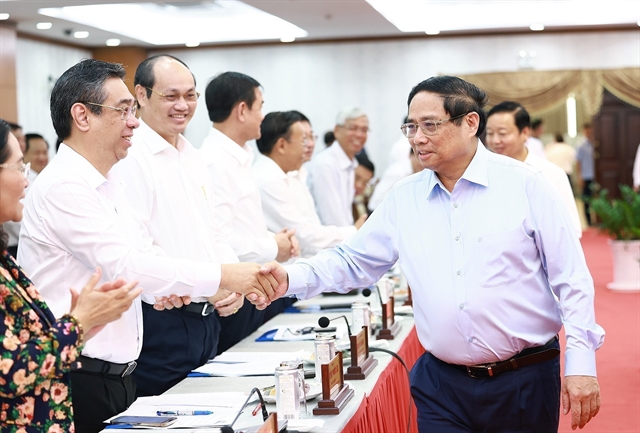 Economy
Economy

 |
| Pupils pose for a photo in front of the iconic HCM City People’s Committee building. — VNS Photo Bồ Xuân Hiệp |
HCM CITY — HCM City is determined to become a leader in Việt Nam’s digital economy and a major economic hub within Southeast Asia by 2030.
The ambitious goal, approved by the People’s Committee, seeks to transform the city into a modern metropolis at the forefront of digitalisation.
The recently ratified resolution by 2025 pointed out strategies to enhance the city’s economic, financial, trade, technological, and cultural stature within the region.
The city is poised to achieve rapid and sustainable economic development under the resolution, thereby improving productivity and international competitiveness.
It continues to reform its growth model, emphasising development driven by scientific and technological applications.
It is also making significant progress in restructuring its economy with a focus on high-tech industries, services, and agriculture.
The city will also enhance social welfare, elevate the quality of life for its residents, and its notable achievements across various sectors.
However, experts have identified various challenges facing the city such as low competitiveness, a slowdown in economic growth, and sluggish real estate and corporate bond markets.
During a recent meeting, Phan Văn Mãi, chairman of the People’s Committee, said the city aimed to achieve a minimum growth rate of 7.5 per cent this year.
To attain this target, the city must expedite infrastructure development and enhance the quality of urban planning, while ensuring sustainable development and adaptation to climate change.
It would need to effectively utilise all available resources, capitalising on its potential and advantages to foster rapid and sustainable development.
More importantly, it would need to accelerate public expenditure for the rest of the year, as the city has yet to meet its public spending objectives.
As of the first seven months, only VNĐ11.8 trillion of public investment has been disbursed, representing only 14.9 per cent of the annual plan.
The city aims to disburse 90 per cent of the allocated budget of VNĐ86 trillion within this fiscal year.
Spanning an area of over 2,060 square kilometres, the city is home to over 10 million residents.
From 2010 to 2022, HCM City contributed 25.7 per cent to the national GDP.
The city’s GRDP experienced a growth rate of 6.46 per cent in the first half. — VNS